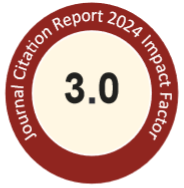Abstract
Traditional Taiwanese rice spirits were made from rice, which is their only ingredient and ethanol source. Site-specific natural isotopic fractionation by nuclear magnetic resonance (SNIF-NMR) methods were used to investigate molasses spirits usually mixed in rice spirits. Themeanratios for the parameters in five rice spirits labeled as Taikeng 8,Taikeng 9,Taichung sen 10, Tainan 11, and Tainung 71 were (D/H)I, 99.0e100.3 ppm; (D/H)II, 121.3e123.0 ppm; whereas for molasses spirits labeled as MS, the mean ratios were 108.7 ppm and 126.8 ppm, respectively. A close and reproducible correlation was found for (D/H)I values of themixtures in whichMS was mixedwith authentic rice spirit samples. The 3.62%MS mixed in Tainung 71 was detected through calculation, whereas the detectable limit for MS mixed in other rice spirits ranged from 8.20% to 11.73%. The SNIF-NMR analysis provides a powerful method for the detection of rice spirits adulteration and can determine the extent to which the rice spirit product is mixed with MS. Copyright © 2013, Food and Drug Administration, Taiwan.
ScienceDirect Link
Recommended Citation
Lai, C.-H.; Hsieh, C.-W.; and Ko, W.-C.
(2014)
"Detection limit of molasses spirits mixed in rice spirits using the SNIF-NMR method,"
Journal of Food and Drug Analysis: Vol. 22
:
Iss.
2
, Article 14.
Available at: https://doi.org/10.1016/j.jfda.2014.01.016
Creative Commons License

This work is licensed under a Creative Commons Attribution-Noncommercial-No Derivative Works 4.0 License.
Fulltext URL
https://www.sciencedirect.com/science/article/pii/S1021949814000179/pdfft?md5=fded6ab17ae01632bda0839ac6da67a4&pid=1-s2.0-S1021949814000179-main.pdf
Included in
Food Science Commons, Medicinal Chemistry and Pharmaceutics Commons, Pharmacology Commons, Toxicology Commons

